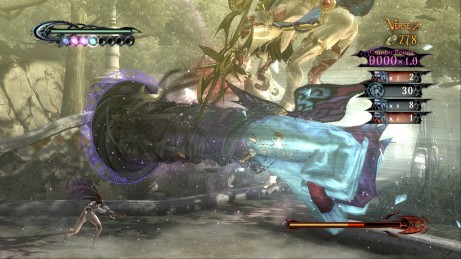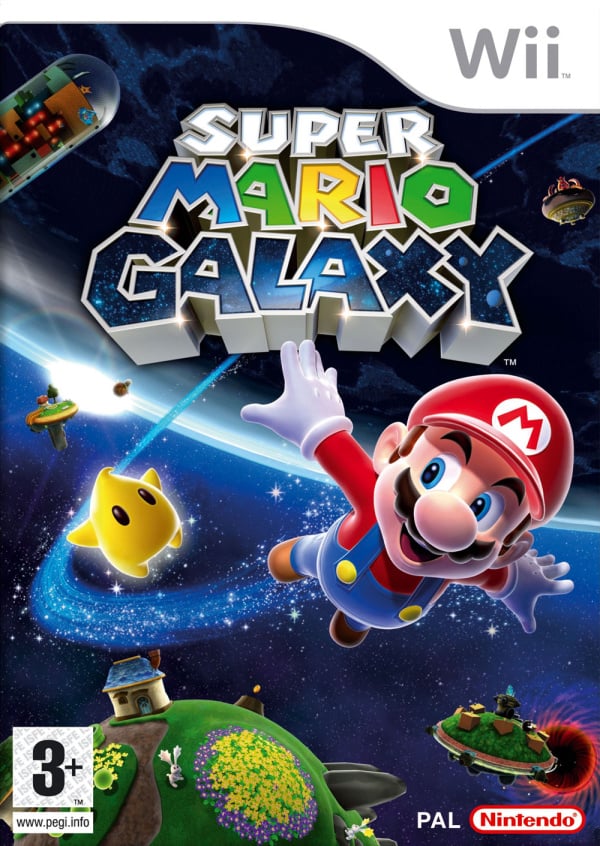Released: April 27, (JP), October 26, 2000 (USA)
 Platform: Nintendo 64
Platform: Nintendo 64
Introduction
The Legend of Zelda: Majora's Mask is a game in the Legend of Zelda series. If you're unfamiliar
with the Zelda series, they are a series of action-adventure games in a fantasy setting, featuring an overworld and dungeons that revolve around puzzle solving.
with the Zelda series, they are a series of action-adventure games in a fantasy setting, featuring an overworld and dungeons that revolve around puzzle solving.
Majora's Mask is known for being different from most Zelda games for a variety of reasons, even though it uses the same engine and many of the same assets as Ocarina of Time. Majora's Mask doesn't take place in the kingdom of Hyrule, as most games do, but in an alternate-reality world called Termina. When Link (the main character) arrives in Termina, he learns that the moon is falling, and that Termina will be destroyed in three days. The game features a 3-day cycle, and is constantly counting down to when the moon crushes Termina. At any point in this cycle, Link can play a song to time travel back to the first day, but by doing so he loses everything he obtained during that cycle except for the key items.
The game revolves around this concept. Link starts at the beginning of the first day, makes some progress that can remain after the cycle resets, and resets the cycle before he is killed by the moon. When he goes back in time, everyone he has met forgets who he is, which makes the game feel pretty lonely.
 |
| Official art for the game's 2015 remake on the 3DS |
Gameplay
Like I said before, Majora's Mask uses the same game engine as The Legend of Zelda: Ocarina of Time. OoT is commonly cited to be the greatest game ever made, so you know that both games have excellent gameplay. The 3 day countdown, the thing that really sets Majora's Mask apart from Ocarina of Time, can be bothersome at points, but I give it a pass because it contributes so much to the game's atmosphere and sense of "doom".
| The three transformations |
Another new aspect of Majora's Mask is the transformation masks, which let Link take 3 alternate forms, each with their own abilities and puzzle-solving use. Keeping with the game's theme, each mask is obtained after the character the mask is based on dies. The form Link takes is supposed to use the 'soul' of the recently deceased character.
| The central gimmick of the Great Bay Temple |
Music
Staying with the game's theme, there is a lot of music that is either creepy, unsettling, sad, or all three. The most famous song from this game is almost certainly the Song of Healing, so please take a listen:
This song, despite its title, has a melancholy feel to it. The dichotomy of the happy title and sad-sounding music can also be found in the situations where the song is played. For example, Link must play the song to a character who is passing away in order to rest their spirit. The moment is sad because the character is dying, but happy because the song makes them at peace.
Nintendo loves to use variations on a central theme in their music. The four main areas of Majora's Mask use different versions of the same unsettling melody to fit the environment. These are the four songs:
Another cool music trick Nintendo uses is shown in the music of Clock Town. This (subtly named) town is the central hub of the game, and is where most of the characters can be found. The town's clock tower is also where the moon crashes into if Link doesn't go back to the first day in time. The town has a very distinct melody, but the music changes depending on the day. The first day, the theme is very laidback. On the second day the theme uses different instruments and includes fast moving patterns to make it sound slightly frantic. On the third and final day, the song is very quick, and you can hear ominous, minor undertones that clash with the melody, signaling the end is near.
Here is the theme for each of the days. I would suggest starting at 0:18 for the first one.
Art
_(En,Fr,De,Es)-1440188403.jpg) |
| SMEARY WALLS AND FLOOR |
The art direction is not this game's strong point, especially if you're considering only the original version. I think the 3DS remake makes it look a lot more bearable. But the fact is that Majora's Mask uses a lot of the same assets as Zelda: Ocarina of Time, a game created when Nintendo was still learning how to make 3D games look good. The Nintendo 64 couldn't render a lot of polygons at once, making a lot of models pretty chunky. That would be ok if the textures were nice, but like most N64 games, textures tend to be "smeared" across surfaces.
I haven't played the 3DS remake, but from what I've seen, the models have a lot more polygons and the textures look a lot better. If you care about how your games look, definitely pick up the 3DS version if you can. Here's an example of the improvement, with the original on the right and the 3DS remake on the left:
Story/Characters
This is where Majora's Mask stands out, especially among Zelda games. While the plotline isn't especially complicated, the game does a great job of making the fantastical story pretty believable.
As you know, the game is about the moon falling into the land of Termina, and Link's time-traveling journey to stop it. In the main town of Clock Town, people seem to be getting worried as time goes on, but there are also lots of people who are in vicious denial that they will die in 3 days. Even though the moon can be seen growing closer and closer, some people laugh it off and continue preparing for the Festival of Time, which is supposed to take place on the 4th day, after the moon hits. This particular tidbit has some eerie parallels to the real world, where people deny climate change in a similar fashion, which makes the story that much more believable.
 The main antagonist, the Skull Kid, also has a story if you look hard enough. Before he stole the Majora's Mask and became consumed by its power, he was a lonely woodland creature who wanted to play with the fairies. Various moments make the player pity him, which I thought made him a good antagonist.
The main antagonist, the Skull Kid, also has a story if you look hard enough. Before he stole the Majora's Mask and became consumed by its power, he was a lonely woodland creature who wanted to play with the fairies. Various moments make the player pity him, which I thought made him a good antagonist.
Some other great characters are Cremia, the young woman who runs the ranch, and her little sister, Romani. Romani is pretty young, under 10 years old, so Cremia acts as a mother to her. On the night before the moon falls, Cremia knows what's going to happen, so she lets Romani drink Chateau Romani, the game's milk equivalent to alcohol. She also says they'll sleep in her bed that night, knowing that they would die before morning. Little stories like this really make the story and characters seem more real.
As you know, the game is about the moon falling into the land of Termina, and Link's time-traveling journey to stop it. In the main town of Clock Town, people seem to be getting worried as time goes on, but there are also lots of people who are in vicious denial that they will die in 3 days. Even though the moon can be seen growing closer and closer, some people laugh it off and continue preparing for the Festival of Time, which is supposed to take place on the 4th day, after the moon hits. This particular tidbit has some eerie parallels to the real world, where people deny climate change in a similar fashion, which makes the story that much more believable.
Denial can be found many places in Clock Town, but the other parts of the world all seem to react differently. In fact, a popular fan theory is that each of the world's five areas represent the 'five stages of grief': denial, anger, bargaining, depression, and acceptance. This is very well discussed in the popular video by Game Theory theorizing that Link is actually dead during the events of Majora's Mask. I highly recommend it if you haven't seen it.
Other than the main moon plot, there are several smaller plots and character developments that flesh out the game. The most famous one is the Anju and Kafei quest, following the events of two lovers trying to get married. However, the Skull Kid, the game's antagonist, turns Kafei into a small child, who then runs away in shame. Link must help Anju find her transformed fiance, and the quest ends with the two marrying themselves in a room in Anju's inn, and cowering together in the last few minutes before the moon hits the town and kills them.
Some other great characters are Cremia, the young woman who runs the ranch, and her little sister, Romani. Romani is pretty young, under 10 years old, so Cremia acts as a mother to her. On the night before the moon falls, Cremia knows what's going to happen, so she lets Romani drink Chateau Romani, the game's milk equivalent to alcohol. She also says they'll sleep in her bed that night, knowing that they would die before morning. Little stories like this really make the story and characters seem more real.
Context/Impact
As I've said before, Majora's Mask was created using the assets from a previous Zelda game, Ocarina of Time. It was also the first game that Eiji Aonuma produced, and he has produced all the Zelda games since. Aonuma was given less than a year to create Majora's Mask, which was a challenge from Shigeru Miyamoto (creator of Mario, Zelda, Wii Sports, etc.). This is why so many assets were reused from Ocarina of Time.
| Majora's Mask |
-52.jpg) |
| Ocarina of Time |
Notes
I'm really excited for Fire Emblem Awakening, and I will certainly have a lot to say about it. With Majora's Mask I didn't have as much to say about the gameplay, and practically nothing to say about art, but with FEA I expect to talk about all the aspects because the game is amazing in so many ways.









